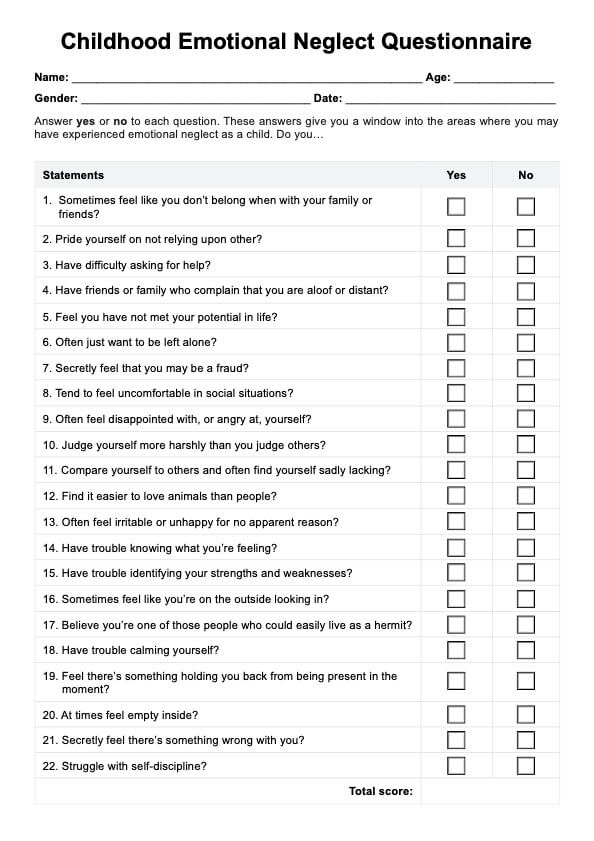You may have been emotionally neglected as a child if you frequently felt your emotions were dismissed or unimportant by your caregivers, leading to feelings of emptiness or disconnection. Struggles with self-awareness, difficulty understanding your emotions, or challenges forming close relationships can also be indicators.

Childhood Emotional Neglect Test
Administer the Childhood Emotional Neglect Test to help clients process their childhood experiences and their impact on current.
Childhood Emotional Neglect Test Template
Commonly asked questions
A child who is emotionally neglected may grow up feeling insecure and disconnected from their own feelings and may struggle with self-esteem issues. This neglect can lead to long-term difficulties in relationships, emotional regulation, and mental health.
Healing from emotional neglect involves developing self-awareness, learning to validate your own emotions, and seeking supportive therapy to address unmet emotional needs. Building healthy relationships and practicing self-compassion are crucial steps in healing.
EHR and practice management software
Get started for free
*No credit card required
Free
$0/usd
Unlimited clients
Telehealth
1GB of storage
Client portal text
Automated billing and online payments











